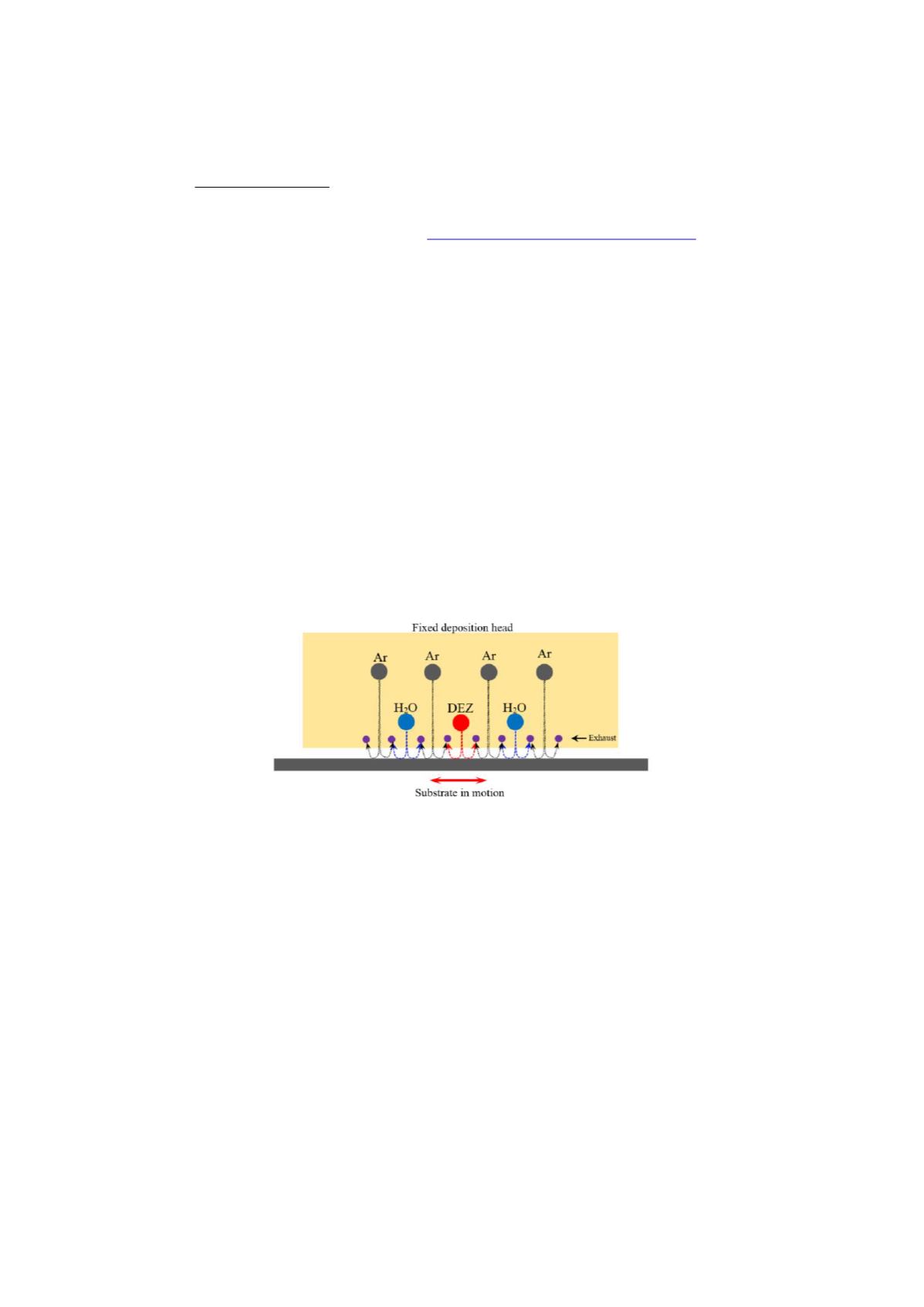
Low temperature deposition of In-free TCO using Spatial ALD for application to
amorphous/crystalline silicon heterojunction solar cells
H.Viet-Nguyen
1, 2
, D. Bellet
1
, P. Carroy
2
, D. Muñoz
2
, D. Muñoz-Rojas
1
1
Univ. Grenoble Alpes, LMGP, F-38000 Grenoble, France ; CNRS, LMGP, F-38000
Grenoble, France. Email:
2
CEA-INES, LITEN, F-73375, 50 Avenue du Lac Léman, Le Bourget-du-Lac, France
Amorphous/crystalline silicon heterojunction (HET) technology, taking advantage of the
high passivation quality of thin a-Si:H layers deposited on c-Si substrate, has become one of
the most promising technologies for the photovoltaics market. Currently, Indium Tin Oxide
(ITO) deposited by magnetron sputtering is the most used transparent conductive material
(TCM) for charge collection and for reducing reflection loss in HET cells. However, ITO
does not only contain a rare element, indium, and thus needs to be replaced by alternative
low-cost TCOs, but also its standard deposition technique, magnetron sputtering, is known to
cause damage to the very thin amorphous layers and even to the critical a-Si:H/c-Si interface
[1]. Our research aims to replace ITO by In-free Transparent Conductive Oxides (TCOs)
using a low-damage deposition technique, named Spatial Atomic Layer Deposition
(SALD)[2].
In SALD precursors are separated in space rather than in time (as opposed to conventional
ALD) which allows a much higher deposition rate. This approach also renders SALD highly
versatile and easy to scale up, while keeping all the advantages of conventional ALD.
Figure 1: Schematic of SALD gas manifold, where the precursor gas channels are separated by inert gas channels (metal precursor:
Diethylzinc – DEZ, oxidant precursor: water vapour). The substrate oscillates beneath these gas channels to grow ZnO film.
In light of its ideal properties, we are trying to deposit optimized In-free TCOs for HET cells
using the novel SALD approach. In this communication we will describe the working
principle of the SALD system present in our laboratory. Then we will show and discuss
experimental results on ZnO based TCOs in term of morphology, transparency, transport
properties and passivation of the HET cell-like structure.
REFERENCES:
[1] D. Zhang, A. Tavakoliyaraki, Y. Wu, R. A. C. M. M. van Swaaij, M. Zeman, Influence of
ITO deposition and post annealing on HIT solar cell structures, Energy Procedia 8, 207–
213 (2011)
[2] D. Muñoz-Rojas and J. MacManus-Driscoll, “Spatial atmospheric atomic layer
deposition: a new laboratory and industrial tool for low-cost photovoltaics,”
Mater.
Horiz.
, vol. 1, no. 3, p. 314, 2014.
O 32
-90-


